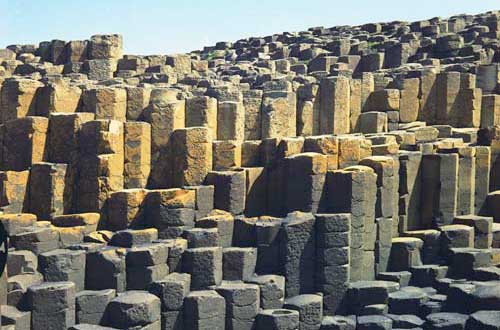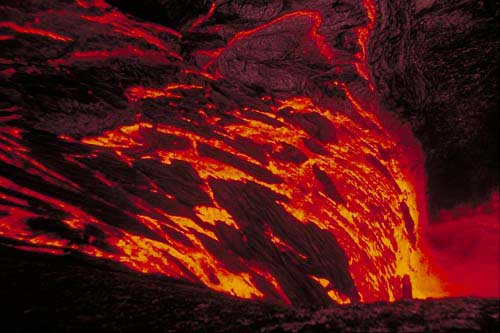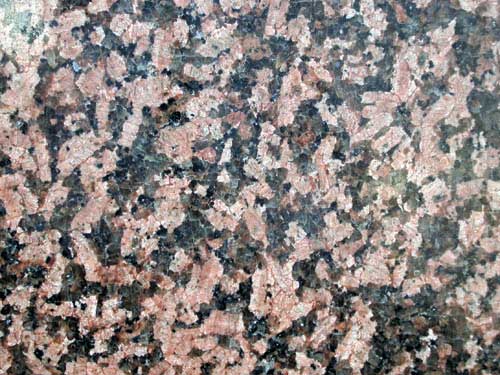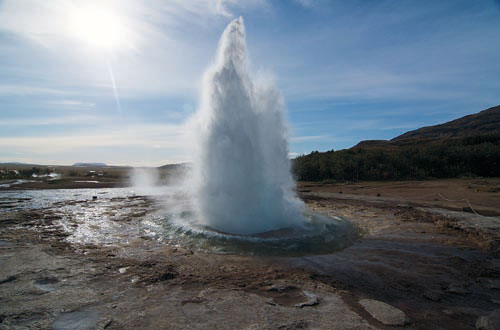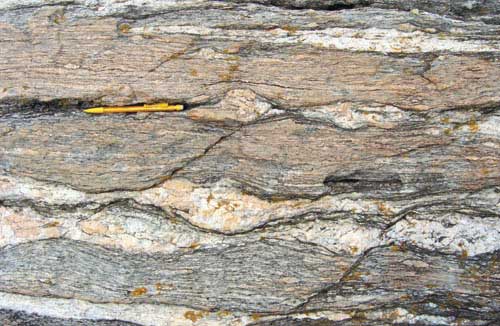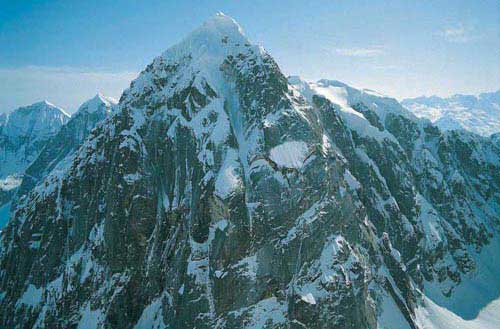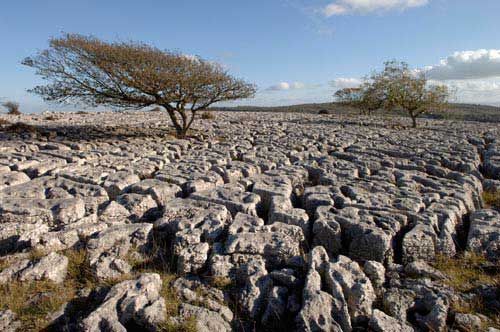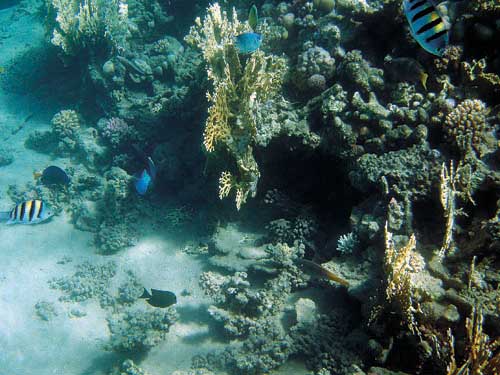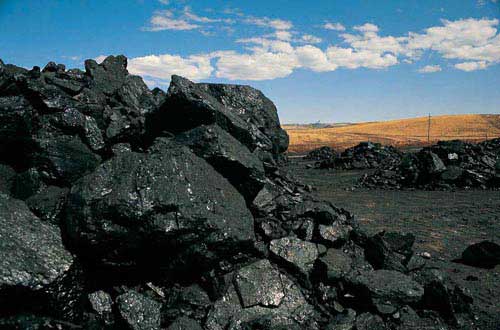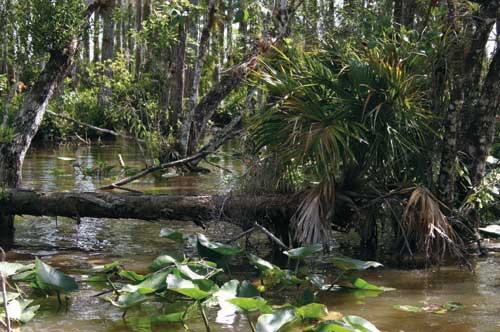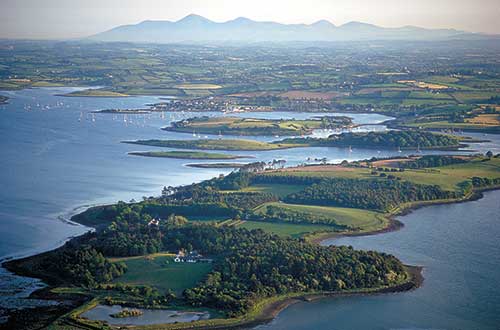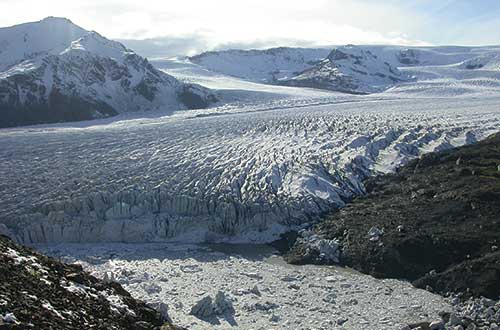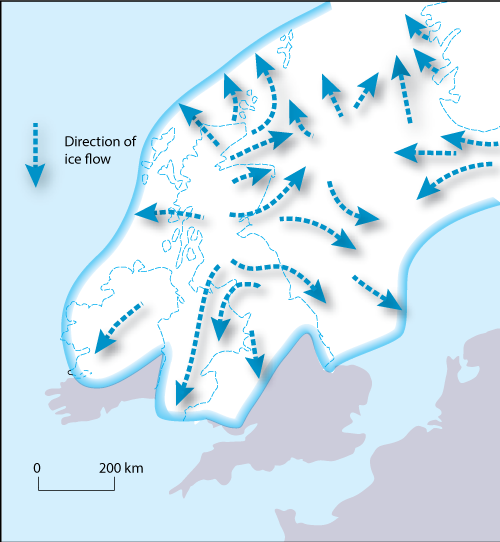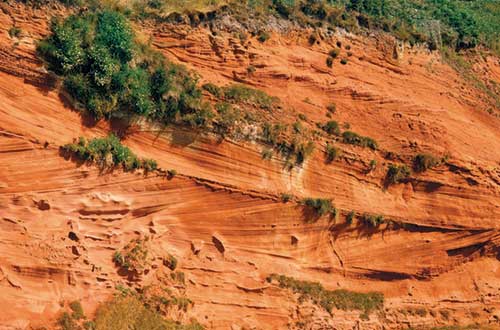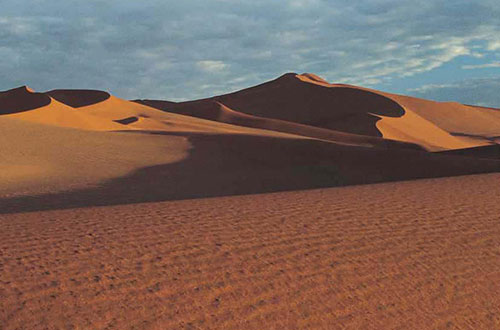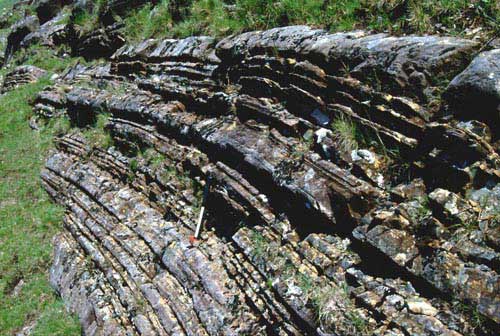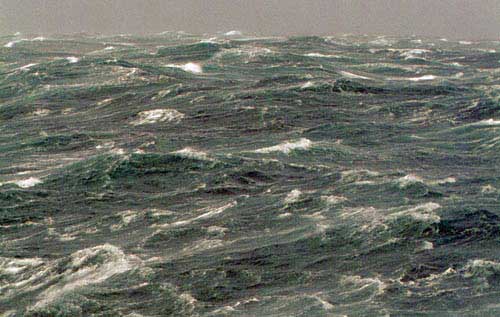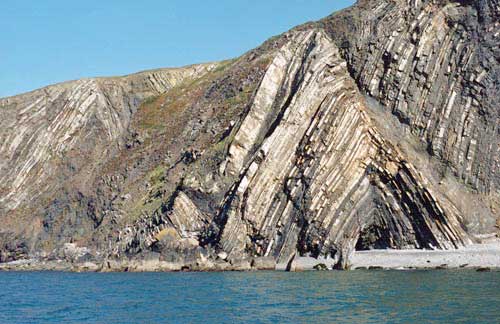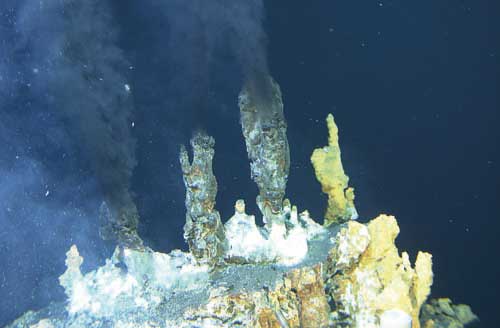Climate through time online


Evidence
Basalt and rhyolite lava and ash. Fine-grained crystals indicate rapid cooling at the Earth's surface. Examples include the Antrim Plateau as seen at the Giant's Causeway (Palaeogene); English Lake District (Ordovician).
Evidence
Coarse-grained granite and gabbro are evidence that magma crystallised slowly beneath the Earth's surface. For example Cairngorm Mountains, Donegal, south Connemara (Silurian to Devonian) and Dartmoor (Carboniferous to Permian).
Evidence
Schist and gneiss are formed by the metamorphism of existing rocks and are often deformed and folded with new minerals, such as garnet, growing. Examples include the 'Lewisian' rocks of the North-West Highlands of Scotland (Archaean).
Evidence
Sandstone, mudstone and limestone (including chalk), containing abundant fossils of warm-water species. For example Central Plain of Ireland, Peak District and Pennines (Carboniferous); North and South Downs (Cretaceous).
Evidence
Sandstone, mudstone and coal. Beds rich in marine fossils alternate with beds containing land and freshwater species. Examples include South Wales, the Midland Valley (Carboniferous) and the Weald (Cretaceous).
Evidence
Rock surfaces polished and grooved by ice; U-shaped valleys and corries eroded by glaciers; drumlins moulded out of glacial debris; eskers formed by meltwaters; tills, sands and gravels cover most of Britain and Ireland (Quaternary). Older tillites are only rarely preserved in bedrock.
Environment
Very cold glacial periods with ice sheets and glaciers, alternating with warmer interglacial periods.
Quaternary ice age deposits are found across most of Britain and Ireland. These relatively thin surface deposits are not shown on the map as they would obscure the underlying rocks. In the diagram above, the white area shows the maximum extent of ice during the most recent glacial advance, which ended 10 000 years ago. There have been many such advances during the past 2.6 million years. Each advance is followed by a warmer interglacial period, when the ice melts and retreats. We are now in an interglacial period — temperate phase within a continuing ice age.
Evidence
Desert dunes are preserved as 'cross-bedded' sandstones with a rusty red colour. Desiccation cracks, salt and gypsum deposits indicate an arid climate. Examples are seen in Cork and Kerry (Devonian) and Cheshire (Permian to Triassic).
Evidence
Sandstone and mudstone containing fossils of marine plants and animals, for example Central Wales and Southern Uplands (Ordovician to Silurian); Grampian Highlands and Sperrins (Neoproterozoic).
Evidence
Thick sequences of fine-grained sedimentary rocks, mainly mudstone, containing fossils such as graptolites and trilobites. Examples are found in North Wales (Cambrian); Wicklow–Wexford (Ordovician).
Print version of Climate Through Time
Download a free pdf of the Climate Through Time poster map.
Please note that the print and online versions of of Climate Through Time use different map data and sea level curve data; other minor differences may also occur. The Climate Through Time online map was produced in 2017 and the print version of the same map in 2008.
Sea level — metres relative to present day sea level
The blue curve1 shows the average sea level compared to its present level for the whole Earth through geological time. This global sea-level may be affected by, for example, changes in the volume of water in the oceans or the changing shape of the ocean basins. However, relative sea-level changes affecting Britain and Ireland may have differed markedly from this 'global' curve. For example, there are localised vertical changes of the land caused by the movement and interaction of the plates that make the Earth's crust, and by the formation and melting of ice-sheets. We cannot measure sea level in the ancient past directly, and a variety of techniques are used to estimate it, including the evidence of erosion by the sea, and fossil reefs approximating to sea level.
Temperature — temperature relative to present day
The red curve2 shows the average global temperature back to the Cambrian period. We cannot directly measure past temperatures, instead we use evidence preserved in the rocks that records temperature in a predictable way. One such method uses the proportion of the oxygen-18 isotope found in carbonate fossil shells; a high oxygen-18 content is associated with cold sea temperatures and times of glaciation. The white 'bars' next to the curves shows ice ages3 — when ice caps covered the polar regions. Note that although the Earth experienced an ice age during the Permian, Britain and Ireland were enjoying tropical conditions.
Globes
The reconstructed globes4 show how the continents have moved across the surface of the Earth through geological time as a result of plate tectonic activity, variously splitting apart and reassembling elsewhere in changing patterns. The continent names are BGS additions to the Deep Time Maps TM and are positioned in their approximate locations. The exact positions of some continents are still the subject of debate.
Copyright
This print version of this poster is the product of a collaboration between the British Geological Survey, the Geological Survey of Ireland and the Geological Survey of Northern Ireland.
